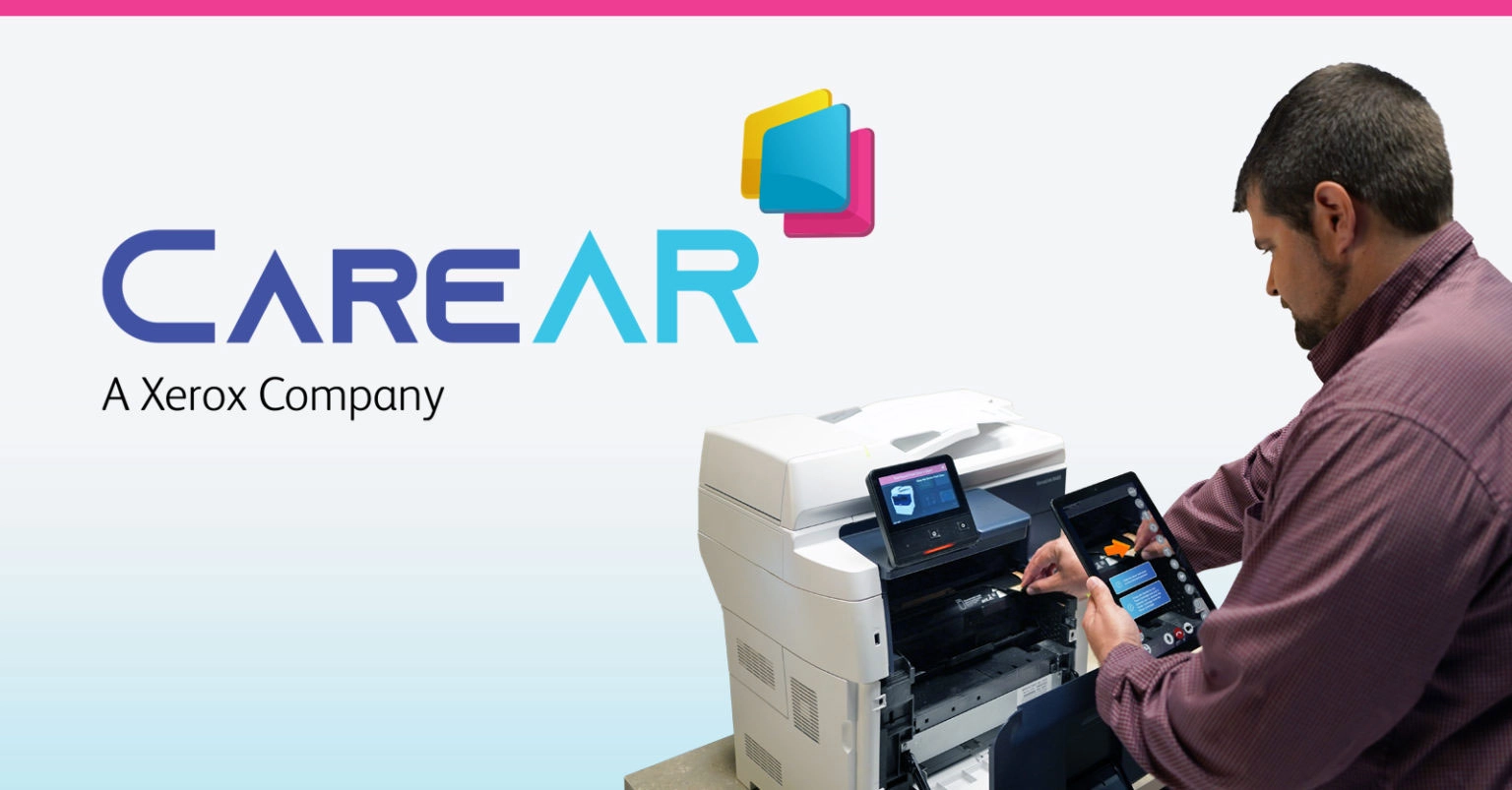Customer Testimonial from Xerox Service Delivery
Since implementing CareAR, Xerox’s service delivery team has found it to be transformational. Customers, remote techs, and the digital support team have had nothing but positive experiences, according to Dawn Jesso, vice president of digital operations for Xerox. Jesso, one of the leaders for CareAR’s deployment within Xerox, told Brigid Mulroy, CareAR customer success manager, about how CareAR has far surpassed her expectations, during a July 1 webinar. If you would like to see the entire interview, you can watch the webinar here. Here are the highlights.
More Efficient Diagnosis Is an Unexpected Benefit
While Xerox had expected CareAR to help it fix problems remotely, it didn’t realize how much integrating CareAR and ServiceNow would streamline the resolution process. Jesso said that in the past, a tech would make a site visit, discover that he/she needed to order a part, and then return to install it. Now, with CareAR, digital support experts take less time up front to identify the problem, which can eliminate a truck roll—customers take a picture of what they see, upload it to ServiceNow, and the tech can see the problem without going onsite. “That diagnosis piece is something we didn’t anticipate, but are really leveraging,” she said.
Customer, Employee, and Operational Experiences Have All Improved
Customers, digital support experts, and remote techs have all said they enjoy using CareAR. It has also made operations more efficient. Here’s how each has changed for the better.
- Customer Experience: The biggest benefit is that customers are so receptive to CareAR, Jesso said. “For example, customers say, ‘That was fun. I want to be the one to call service next time.’ That never happens,” she said. There is also less stress for customers, because they feel like the remote tech is in the room with them, she said. Showing the tech what they see means they no longer have to describe what they’re looking at, and the tech can walk them through what they need to do.
- Employee Experience: The remote techs like that CareAR uses a device’s rear camera and mic, because these allow them to fix problems faster. Here are two scenarios: 1) Customers can move around while talking to the tech—during a recent CareAR session, a customer realized she had to replace a part but needed information that was in a nearby warehouse, so she took the remote tech on a car ride there. They found the part number and then ordered the part remotely, which is now on its way. 2) CareAR also lets techs make sure customers are doing what they’re instructed to do, correctly. For example, if a tech says, “Press the start button and hold for 10 seconds” but he/she sees that the customer is only holding it for one second, he/she can remedy that.
- Operational Experience: While Jesso thought CareAR would make service calls longer, she said productivity metrics have actually shown a decrease in “handle time.” She said CareAR has also kept employees and customers engaged.
Jess is thrilled with its success so far. “What I like most are that the employees are engaged and the customers like it,” she said. “Taking our ability to add value to the customers as well as taking the field to the next leve l— that’s really what gets us excited.”
